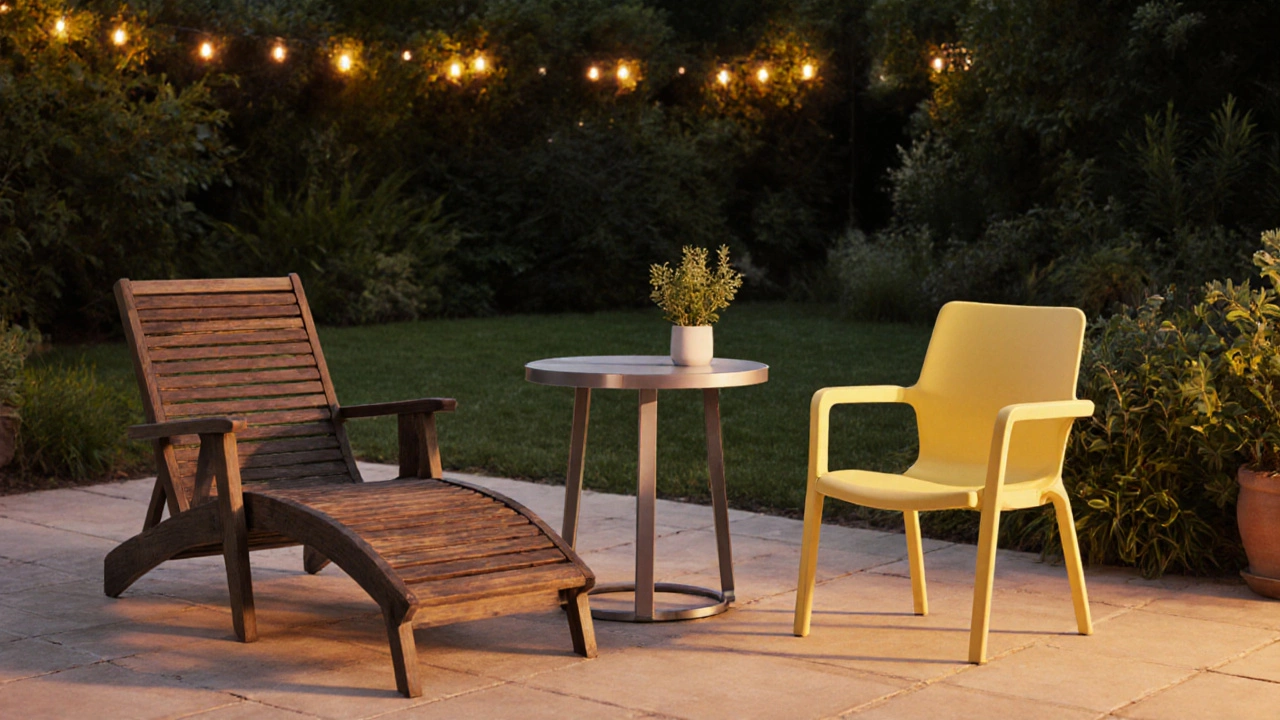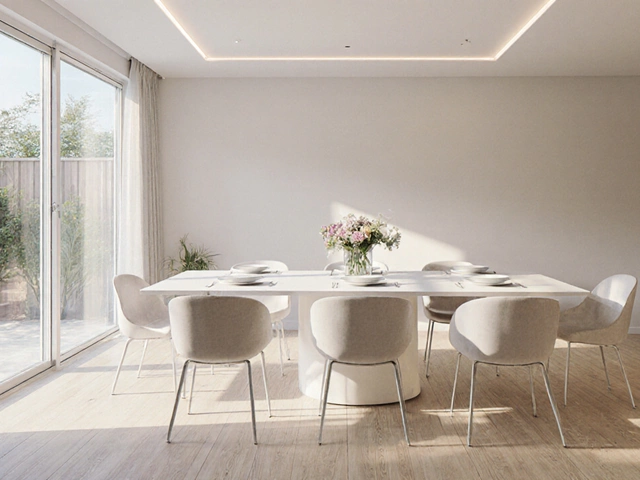
Garden Furniture Lifespan Estimator
How long will your furniture last?
Select your material and maintenance habits to see estimated lifespan
Estimated Lifespan
Based on your selections
When you love spending evenings on the patio, the last thing you want is to see your Garden furniture slowly deteriorate from rot, rust, or sun damage. A few simple steps can keep your pieces looking fresh for years, whether they’re made of teak, aluminum, or recycled plastic. Below you’ll learn what causes rot, which materials fight it best, and a routine you can follow without becoming a DIY expert.
Why garden furniture rots - the science behind the damage
Rot isn’t magic; it’s a biological reaction to moisture, temperature fluctuations, and oxygen. When wood fibers stay damp for long periods, fungi break down lignin and cellulose, turning sturdy boards into soft, crumbly mess. Metal isn’t immune either - moisture combined with salt air (especially in coastal towns like Wellington) accelerates corrosion, eventually weakening frames.
- Water intrusion: Direct rain, dew, or sprinklers that splash onto furniture.
- UV exposure: Sunlight breaks down polymers in plastic and fades finishes on wood.
- Temperature cycling: Expansion and contraction create cracks where water can settle.
- Airborne pollutants: Salt, pollen, and grime trap moisture against surfaces.
Understanding these factors makes it easier to block them.
Choosing rot‑resistant materials - what to buy and why
Not all garden furniture is created equal. Here’s a quick rundown of the most common materials and how they hold up against the elements.
| Material | Typical lifespan (years) | Maintenance level | Rot/Corrosion resistance |
|---|---|---|---|
| Teak (hardwood) | 20‑30 | Low - occasional oil | High (natural oils) |
| Aluminum | 15‑25 | Very low | High (anodized finish) |
| Polypropylene (recycled plastic) | 10‑15 | Very low | Moderate - UV‑stable blends last longer |
| Rusted steel | 5‑10 | High - need repainting | Low (prone to corrosion) |
If you’re buying new, teak and powder‑coated aluminum are the safest bets. Plastic alternatives work well in sunny climates but watch for fading. Avoid low‑grade steel unless you’re ready to repaint it every season.
Protective finishes - sealants, oils, and paints that work
Even the toughest wood benefits from a finish that blocks water. Here are the three most effective options.
- Wood sealant - a clear, penetrating coating that forms a moisture barrier while retaining natural grain. Look for UV inhibitors if you live in high‑sun areas.
- Oil finish (e.g., teak oil or linseed oil) - feeds the wood’s natural oils, keeping it supple and resistant to cracking. Reapply once or twice a year.
- Exterior paint with a UV‑resistant formula - best for painted frames or wooden furniture you want a color change on. Two coats, with a primer, give the best protection.
Apply any finish on a dry, warm day. Use a brush or lint‑free cloth, let it soak for 15 minutes, then wipe off excess. A thin, even layer cures faster and lasts longer.
Covering and storing - the simplest rot‑prevention habit
The single most effective habit is using a proper Furniture cover. A cover that’s breathable (allows moisture to escape) prevents mold while keeping rain off the surface.
- Choose a cover size that fits snugly - sagging creates pockets of water.
- Secure it with straps or elastic cords to stop wind from blowing it away.
- Store during extreme weather - when a storm is forecast, pull the furniture into a garage or shed if possible.
If you can’t bring pieces indoors, consider a lightweight, UV‑stable storage canopy that shelters the entire patio area.
Maintenance routine - a seasonal checklist
Set a calendar reminder and follow this quick checklist each season.
- Inspect for cracks, loose joints, or rusted bolts.
- Clean with mild soap and water; avoid pressure washers that force water into joints.
- Apply the appropriate finish (sealant, oil, or paint) based on material.
- Cover or move furniture to a dry spot before the first frost.
By spending less than 30 minutes a month, you’ll extend lifespan dramatically.
DIY rot‑stop treatment - step‑by‑step for wooden pieces
If you discover early signs of rot (soft spots, white fuzz), act fast.
- Remove the affected area: Use a chisel to cut out any mushy wood until you reach solid grain.
- Dry the surrounding wood: Let it air dry for 24‑48 hours, or use a dehumidifier in a garage.
- Apply a wood hardener (e.g., epoxy filler). Follow the manufacturer’s mixing ratio, spread with a putty knife, and let cure.
- Sand smooth once hardened, then coat with a wood sealant.
- Reassemble any hardware, adding stainless‑steel screws if corrosion was an issue.
This process can salvage a chair or table that would otherwise need replacement.
Common pitfalls to avoid
Even seasoned gardeners slip up. Here are mistakes that undo all your hard work.
- Leaving a cover on a wet surface: Traps moisture and encourages mold.
- Using interior paint outdoors: Lacks UV protection and peels quickly.
- Neglecting hardware: Screws and bolts rust first, pulling the frame apart.
- Skipping yearly cleaning: Dust and pollen act like a sponge for water.
Address each issue before it becomes a major problem and you’ll keep the rot at bay.
Quick takeaways
- Pick rot‑resistant materials like teak or powder‑coated aluminum.
- Apply a penetrating sealant or oil finish once a year.
- Use a breathable cover and store furniture indoors during harsh weather.
- Follow a simple seasonal maintenance checklist.
- Act fast on early rot signs with wood hardener and proper repairs.
How often should I re‑apply a wood sealant?
Most high‑quality sealants last 12‑18 months on a sunny patio. Re‑apply when water no longer beads on the surface.
Can I use a regular tarp as a garden furniture cover?
A tarp will keep rain off, but it traps moisture and promotes mold. Choose a breathable cover designed for outdoor furniture.
Is teak really worth the price?
Yes. Teak’s natural oils give it a built‑in water repellent, so it needs only occasional oiling and can last 30 years or more.
What’s the best way to remove rust from steel frames?
Scrub with steel wool, apply a rust converter, then prime with a rust‑inhibiting primer before repainting.
Do plastic chairs need any finish at all?
High‑grade polypropylene is UV‑stable and needs only a quick rinse with soap and water. Keep them out of direct sunlight for more than 8 hours a day to avoid fading.



